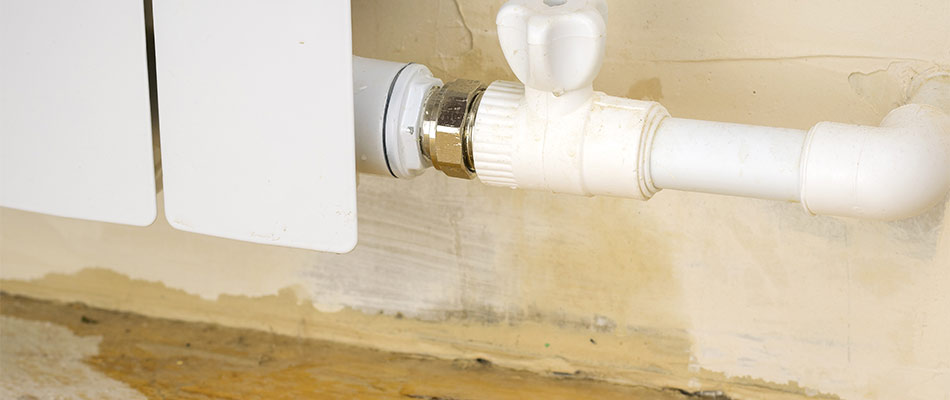Finding Hidden Water Line Leaks: 6 Useful Detection Methods
Finding Hidden Water Line Leaks: 6 Useful Detection Methods
Blog Article
How do you really feel when it comes to Top leak detection hacks?

Early discovery of dripping water lines can minimize a potential disaster. Some little water leakages might not be visible.
1. Examine the Water Meter
Every home has a water meter. Inspecting it is a proven manner in which aids you uncover leakages. For beginners, turn off all the water sources. Ensure no one will flush, utilize the faucet, shower, run the washing machine or dishwasher. From there, go to the meter as well as watch if it will alter. Given that no person is using it, there need to be no activities. That shows a fast-moving leakage if it relocates. If you detect no changes, wait a hr or 2 and also inspect back once more. This suggests you might have a sluggish leak that could even be below ground.
2. Examine Water Usage
If you detect sudden changes, in spite of your intake being the exact same, it means that you have leaks in your plumbing system. An abrupt spike in your expense indicates a fast-moving leakage.
A constant boost every month, also with the exact same habits, reveals you have a slow leakage that's additionally gradually rising. Call a plumber to thoroughly examine your property, specifically if you feel a warm location on your floor with piping underneath.
3. Do a Food Coloring Examination
When it comes to water consumption, 30% comes from commodes. If the color somehow infiltrates your bowl throughout that time without flushing, there's a leakage between the storage tank and also bowl.
4. Asses Exterior Lines
Do not neglect to check your outdoor water lines too. Test faucets by affixing a yard hose. Ought to water leak out of the link, you have a loose rubber gasket. Change this and also ensure all connections are tight. If you've got an automatic sprinkler, it will help get it properly examined and maintained yearly. One little leak can waste tons of water and spike your water expense.
5. Inspect and Analyze the Circumstance
Home owners need to make it a habit to check under the sink counters as well as also inside cabinets for any type of bad odor or mold growth. These 2 warnings suggest a leak so prompt attention is called for. Doing regular assessments, also bi-annually, can save you from a major trouble.
Inspect for stainings and damaging as the majority of devices and pipelines have a life expectancy. If you presume dripping water lines in your plumbing system, don't wait for it to escalate.
Early discovery of dripping water lines can reduce a possible disaster. Some small water leakages may not be visible. Examining it is a proven way that assists you uncover leakages. One little leak can lose tons of water as well as spike your water costs.
If you suspect dripping water lines in your plumbing system, do not wait for it to rise.
How to Know If Your Home Has a Hidden Leak
Water Meter Reveals Inexplicable Water Usage
If you’d like to test whether or not there’s a leak somewhere in your home, you can do this using your water meter. Here is how to conduct the test:
Don’t use any water in your home for at least 30 minutes; this also means not turning on faucets or water-using appliances.
Go outside, and check your water meter for activity.
If your water meter shows that there was activity, even though no one was using any water, this proves that there is a leak in your home.Visible Mold or Mildew Growth
Leaks behind walls create moist, dark environments that allow mold and mildew to grow and thrive. Eventually, you might see mold growth forming on the wall closest to a hidden leak.
If mold is growing in an area that receives a high amount of moisture, such as a bathroom, it may simply be an indication that better ventilation is needed. However, if you see mold growth on a wall or the ceiling in an area where you would not expect, you probably have a hidden leak.
Musty, Mildew Odor
Sometimes you might not be able to see the mold or mildew that is growing as a result of a leak. However, the smell can give the problem away just as easily. If you catch a whiff of something musty, there’s a good chance that old water is collecting somewhere in your home that you can’t see.
Stained/Warped Walls, Ceilings, or Floors
When your home soaks up water, a variety of red flags can become visible, including ceiling stains, bubbling drywall, warped walls, and sagging floors. While these issues can be caused by excess humidity, they can also be signs that a pipe or plumbing connection has started leaking behind your walls.
Inexplicably High Water Bill
After a while, you get a general sense for what your water bill should be. If you own a pool or sprinkler system, your bill will tend to be higher during summer. However, if you receive a water bill that seems especially high, and you can’t figure out what caused it, then you may have a hidden leak somewhere that’s increasing your bill.
https://www.plumbingjoint.com/blog/2019/july/how-to-know-if-your-home-has-a-hidden-leak/

We had been guided to that write-up about Hacks to detect leaks from a good friend on our other domain. Sharing is caring. Helping others is fun. We appreciate reading our article about Finding hidden leaks.
Precision work offered. Report this page